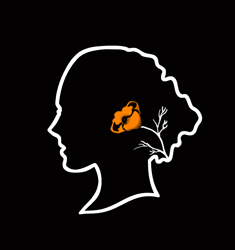Ernestine DeSoto, egg tempera on panel, 12x16
Compassionate History: Ernestine De Soto and California Missions
Grade: 4th or 5th
Subjects: California Missions, Social Education: empathy, compassion, forgiveness, Ancestry, Folklore, California History
Class Session: 1 to 2 depending on accompanying activities
Lesson Summary: This lesson is designed to teach the CCSES required unit on California Missions through the eyes of Ernestine De Soto a 6th generation Chumash descendant who became a nurse at the SB Mission for the Franciscan monks. Through her story, students will learn about the pros and cons of the mission era and study Ernestine as an example of empathy and compassion in history. The lesson is designed to give children exposure to ‘soft skills’ and see a more human centered approach to history. The lesson plan below is only a guideline. Consider your student’s needs and previously covered material and get creative!
Lesson Objectives:
Basic timeline of the California Mission era alongside Ernestine’s story
Make a compassion (bookmark) basically cover ways to be compassionate
History of Chumash and Mission Culture today
Materials:
Portrait of Ernestine De Soto by Holli Harmon
SB Mission Visit
Materials for Timeline
The Sugar Bear by Ernestine De Soto and Mary Yee
Lesson Plan:
Introduce how this lesson fits into an existing unit on California Missions in your class
Emphasize the idea that a lot of different people helped create California
As a warm-up activity, have the children write on colored notecards things they like or dislike (2-1)
Pair students up and have them talk about their likes and dislikes.
Reflection: “How did it feel to talk to someone who liked different things than you?
“How did it feel finding out you liked the same things?”
6. Maybe do the same thing with sharing something hard that happened and responding accordingly: “I am sorry that happened.” “Do you need a hug?” “How can I help?”
7. Introduce someone who is different: Pull up portrait of Ernestine De Soto
8. See, Think Wonder
9. Have students identify the Mission Era, Chumash and Languages and Ernestine’s influence in Healthcare at the Mission and her partnership with Santa Barbara Museum of Natural History.
10. Read adapted parts of Ernestine’s story, break it into paper squares and have students put her life events on a timeline for CA History.
11. Talk about her ideas of serving the poor and helping others: what ideas can students come up with?
Lesson 2
12. Students listen to the ‘Sugar Bear’
13. Learn about various kinds of folklore and understand how folklore is not always a happy ending
14. Have students think about a lesson they have learned and turn it into a folklore tale.
Assessment:
-Willingness and articulation during class discussion
- Ability to work as a group in arranging De Soto’s Timeline
- Listing ability of the story
- Writing of story
Standards Addressed:
CCS
Fourth Grade History Standards: California a Changing State
4.2
3. Describe the Spanish exploration and colonization of California, including the relationships among soldiers, missionaries, and Indians (e.g., Juan Crespi, Junipero Serra, Gaspar de Portola).
5. Describe the daily lives of the people, native and nonnative, who occupied the presidios, missions, ranchos, and pueblos.
6. Discuss the role of the Franciscans in changing the economy of California from a hunter gatherer economy to an agricultural economy.
Created by Katherine Kwong Intern Fall 2016

